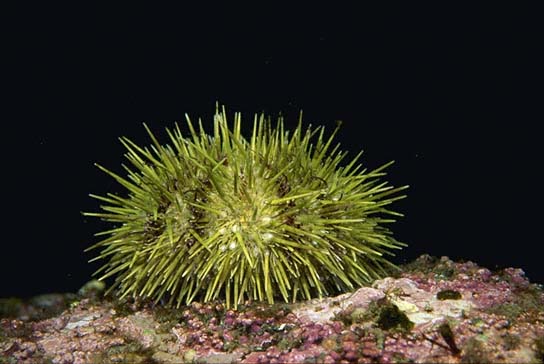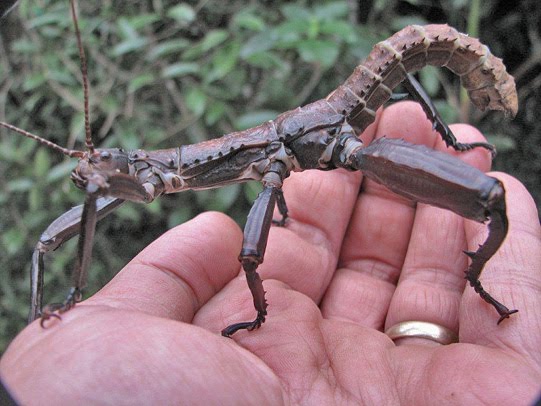
A long, tempestuous week blew our diver friends off the water. It was a disappointing start to the Pink Scallop season--so sad. But the winds have died down and we are looking at Sunday for sample collections and Tuesday for a commencement of commercial harvest.
Scallops live at such depths that harvest diving is dicey and challenging, as with any wild fishery, we are endlessly subject to vagaries of the weather. As reflected last week, developing this fishery will take a great deal of time and experimentation. Please bear with us as we work to Bring Back the Pinks!
Department of Fisheries Management
Yesterday the International Pacific Halibut Commission wrapped up their annual meeting in Anchorage. For those with the inclination to dig a little deeper, there are some fascinating statistics on Halibut sizing over time on their website http://www.iphc.int/news-releases.html.
But more to the point, the 2016 kick-off to the halibut season has been announced for March 19 and the quota for our region has been raised by 20%. This means that our local flatfish are thriving and stocks are growing, and it means more availability for you of the San Juans Halibut, the greatest halibut in the world!
This tribal-only fishery kicks off on halibut opening day, March 19th and our plucky Lummi, Swinomish, Tulalip and Jamestown friends will convert their crab skiffs to longliners for two, three or on a good year, four openings to pursue these massive flatfish. San Juans Halibut have shorter muscle fibers than the Alaska variant, higher fat levels and a more subtle, richer and rounder flavor. They are simply the best. And, the past few years, these early fish have been the most reasonably priced of the season.

March 19. Be ready
Winter's Almost Gone
Last night at Jones Ranch, we had our first round of Nettle pesto and nettle tea. The grass is growing, buds are swelling and calves are on the ground. We are on the home-stretch!
And fresh fish is beginning to loosen up as well. Rhode Island production looks good for the week ahead and we have a reasonable basket of fresh locals as well.
We still have green urchins available, crab pricing is still reasonable, and as of Monday we will have...
Fresh Eastern Fish--Look For Monday Update
Valentines Day Warning
On and around Sunday, February 14, your business will be thronged with famished, amorous customers. Suppliers nation-wide will run short of choice items. We are digging deep to cover you with the premium proteins Lusty Diners demand. Special Fishes!! Fresh Meats!! The Best Distributor list of Small-Farm Oysters in the business! Abundant Pink Dye--We've got you covered!! Don't get caught short!! Call today to set up a Valentines Program. Help us help you!
Department of Land-Based Activities.

Feeding time at Jones Ranch
Hog Call
We slaughtered cattle last week--call now for availability week of Feb. 8- call Sara.
Hogs go this week--available as wholes, halves and in cuts as early as Thurs or for the week of the 8th. We anticipate at least several months of weekly fresh pork availability.
Winter's Almost Gone
Last night at Jones Ranch, we had our first round of Nettle pesto and nettle tea. The grass is growing, buds are swelling and calves are on the ground. We are on the home-stretch!
And fresh fish is beginning to loosen up as well. Rhode Island production looks good for the week ahead and we have a reasonable basket of fresh locals as well.
We still have green urchins available, crab pricing is still reasonable, and as of Monday we will have...
| #1 60 up TUNA | ||||
| #2 TUNA | ||||
| ALBACORE | ||||
| SWORD | ||||
| MAHI | ||||
| 1-2 TAI SNAPPERS | ||||
| GROPER | ||||
| BRANZINI | ||||
| ONO | ||||
| OPAH | ||||
| BLUE MARLIN | ||||
| ESCOLAR | ||||
| 8+ CALIFORNIA HALIBUT | ||||
| FRESH FISH-DOMESTICS | ||||
| TRUE COD FILLET | ||||
| LING COD | ||||
| DOVER FILLET | ||||
| ROCK FILLETS | ||||
| PETRALE FILLETS | ||||
| FARMED STURGEON | ||||
| STEELHEAD, U9, G& | ||||
| STEELHEAD, 9+, G&G | ||||
FRESH & LIVE SEAFOOD ***ALL LIVE SEAFOOD WEATHER DEPENDENT**
LIVE DUNGENESS CRAB
LIVE DUNGENESS CRAB
GREEN SEA URCHIN
SEA CUCUMBER SALISH SEA FRESH SQUID
|
Valentines Day Warning
On and around Sunday, February 14, your business will be thronged with famished, amorous customers. Suppliers nation-wide will run short of choice items. We are digging deep to cover you with the premium proteins Lusty Diners demand. Special Fishes!! Fresh Meats!! The Best Distributor list of Small-Farm Oysters in the business! Abundant Pink Dye--We've got you covered!! Don't get caught short!! Call today to set up a Valentines Program. Help us help you!
Department of Land-Based Activities.
Feeding time at Jones Ranch
Hog Call
We slaughtered cattle last week--call now for availability week of Feb. 8- call Sara.
Hogs go this week--available as wholes, halves and in cuts as early as Thurs or for the week of the 8th. We anticipate at least several months of weekly fresh pork availability.
Call for ordering details! Our pastured Lopez Pork is the best anywhere.
Lambs continue to go meekly to the slaughter, week by week and are showing no signs of rebellion. Get yours today!
Non-Gregorian Calendar Corner

 Fish Broker in Happier Times
Fish Broker in Happier Times
The Bubble Bursts.
Despite brewing stormclouds, 2014 seemed likely to offer the same happy circumstance. The Chinese economy was slowing down. New leadership in Bejing slapped a series of taxes and restriction on imported proteins to reflect the anger of poorer Chinese about wealthier folk eating foreign foods. However, through spring and into summer, prices maintained the momentum of years past and crept higher for the benchmark fisheries, including crab, salmon and halibut. Fresh markets for fish, which are mainly domestic, stayed stable. Then came a series of much larger than expected salmon catches in Canada and Alaska and fish companies began offering unexpectedly large volumes of frozen fish onto the spot markets and found no buyers at advertised prices. Processors kept buying and buying. Sellers lowered prices, still no buyers. Meanwhile the Dollar was rising against other currencies, meaning our fish was pricing itself out of export market after export market. Fish does not improve with age and and storage is expensive--at one point every cold storage on the coast was plugged to the point of refusing product. Some processors were reduced to renting freezer shipping containers and stacking fish up in parking lots.
After Le Bust, Le Deluge
Lambs continue to go meekly to the slaughter, week by week and are showing no signs of rebellion. Get yours today!
Non-Gregorian Calendar Corner
Chinese New Year is celebrated at the turn of the traditional lunisolar Chinese calendar. Festivities start the night before the New Year and extend for fifteen full days of the New Year. The first day of the New Year is held on the new moon between 21 January and 20 February. This year Chinese New Year will be held on Monday, February 8. Each night has a different feasting tradition involving specific dishes, but many oriented around seafood. The New Year eve dinner is known as Reunion Dinner and is generally seafood heavy. This is so because seafood is delicious, and also because the pronunciation of fish (魚yú) makes it a homophone for "surpluses"(餘yú). So, in the interest of a prosperous New Year, eat fish every night, but specifically on the 7th. Sadly, the 13th night of festivities calls for an all-vegetarian menu.
The year beginning Feb 8 will be year 2130, and is the Year of the Monkey in Chinese Astrology.

More Crab! More Geoduck!
In 1928, the ruling Kuomintang under Chiang Kai Shek mandated a Gregorian New Year of Jan 1, but the population refused to accept the change. In 1967 during the Cultural revolution, Chinese New Year celebrations were banned for 13 years in an effort to extract more labor out of the population. The return of traditional celebrations has been a powerful symbol of the unwinding of high-totalitarian laws in China.
These last years Chinese New Year has typically marked the annual peak of prices of Geoduck, Dungeness Crab, Lobster, Shrimp and many fishes. Jumbo Jets laden with Washington origin crab line the runways in Vancouver and Shanghai. Fishermen and brokers world-wide plan trips to Reno based on Chinese New Year winnings. This year, prices have barely budged as we approach the date. Why?
Changing Times
Many past Fish-O-Grams have discussed the changing nature of Chinese purchases of West-Coast seafood and what it means for all of us. Simply put, China became the major driver in global seafood demand and pricing during the early years of the 2000s. In China, imported food in general, and seafood in particular, became a mark of upper and middle class distinction. Also, for good reason, Chinese consumers increasingly distrust their own food supply. For a long decade Chinese demand and pricing ratcheted up every year. This made business easy for brokers on our side of the pond and the persistent lesson learned was, "he who has the product wins", even if product was purchased above market levels, China would always pick up the slack and make long bets good. Fishermen saw the value of their catch rise yearly, brokers splurged on Cadillac Escalades, gold plated e-cigarettes and Rolex watches, and everyone was happy. This dynamic was also alive and well in other resource businesses, including oil, grain and metals. Conventional wisdom held that this perpetual increase was not a bubble, but represented the new normal as the massive Chinese population moved into the global trading gyre.
In 2013 a coast-wide, all-time record salmon catch was met with higher pricing--an unprecedented combination--and supply seamlessly melted away into the marketplace.
Many of the smaller, specialty fisheries saw pricing so high local buyers were priced clean out of certain markets, including Dungeness Crab, Geoduck, Spot Prawns, Seas Cucumbers and Urchins.

The Bubble Bursts.
Despite brewing stormclouds, 2014 seemed likely to offer the same happy circumstance. The Chinese economy was slowing down. New leadership in Bejing slapped a series of taxes and restriction on imported proteins to reflect the anger of poorer Chinese about wealthier folk eating foreign foods. However, through spring and into summer, prices maintained the momentum of years past and crept higher for the benchmark fisheries, including crab, salmon and halibut. Fresh markets for fish, which are mainly domestic, stayed stable. Then came a series of much larger than expected salmon catches in Canada and Alaska and fish companies began offering unexpectedly large volumes of frozen fish onto the spot markets and found no buyers at advertised prices. Processors kept buying and buying. Sellers lowered prices, still no buyers. Meanwhile the Dollar was rising against other currencies, meaning our fish was pricing itself out of export market after export market. Fish does not improve with age and and storage is expensive--at one point every cold storage on the coast was plugged to the point of refusing product. Some processors were reduced to renting freezer shipping containers and stacking fish up in parking lots.
After Le Bust, Le Deluge
Processors and brokers slowly came to the cold hard truth. China was not going to pick up anyone's slack. Prices began to plunge. Sockeye salmon was the most spectacular example, with pricing falling from roughly $5# for large volume-high quality frozen fish to a reported low of #1 sockeye delivered into Tokyo for $2.15# Larger companies lost huge amounts of money--Icicle Seafoods took such a beating it's owners threw in the towel and put the business up for sale. Frozen Coho prices have fallen below farmed tillapia levels and remain there. Tens of millions of pounds of 2014 product still languish in West Coast cold storage.
In 2015 the pricing knives came out. As with most market crashes the pendulum has swung far in the other direction. Fishermen in Bristol Bay saw boat prices of $.50#, down from $1.40# the year before. 2015 Chinese New Year still brought stratospheric crab prices, but the bloom was clearly off the rose. Last April during the tribal Spot Prawn fishery the live Prawn price fell as low as $4.50# from 2014's $11+#. Even worse, buyers only wanted limited volumes of prawns--we know fishermen who lost thousands of pounds of live prawns waiting for Chinese buyers who never came. For Dungeness Crab, throughout the summer and into fall Chinese exporters have been MIA and brokers have turned their efforts to moving crab into the California and Eastern American market.
Hard times in the Bone Yard.
As goes seafood, so goes other commodities. China has turned off the lights, in the same way the Japanese did in the mid 1990s. We can still remember the log export yard in Anacortes idle and stuffed with premium logs when the Japanese log market collapsed in 1995. Years later the Port chipped the logs to clear the space.
Just for fun, below is a graph showing scrap metal prices.

Should have put the money in Sockeye.
China, Seafood, and You.
We like moderate, stable pricing and abundant supplies. We also like robust economic times. For the moment we seem to have the dream scenario, China has largely withdrawn from the buying end of the business, while our regional economy is ticking away. Therefore, we, and you, enjoy reasonable pricing, abundant supplies and strong local demand. Medium term, our West Coast prosperity has become so entangled with China that a weak China is not good for anyone, even if it means that they leave our Spot Prawns alone. Hopefully troubles in China do not disrupt the Seattle Restaurant Rally. Long term, anyone who bets against 1.4 billion Chinese bootstrapping themselves one way or another is a fool. And, if they appreciate our fish more than we do, then they should probably have it. One of the bitter ironies of American seafood trade is that we generally export our good product and import nasty stuff--farmed tiger prawns and reprocessed fish.
So the best case scenario is that we use this interruption in the Chinese market to build customer appreciation of our local products. When, inevitably, resurgent Chinese demand begins to nudge prices up, hopefully we, and you, can stay in the game with higher prices justified by appreciation of our incomparable seafood.
So enjoy the reasonable prices, don't get too used to them, and above all, stay loose.
JFF Salutes the Monkey
So crab pricing remains stable and frozen fish is still a bargain. What does the Chinese New Year mean to us? Well, Sara and I are both Snakes, in Chinese Astrology. The year of the Monkey can be a good and prosperous year for Snakes, provided we can Out Smart the Monkey. So there you have it. Good times ahead, just be alert and try and stay a step or two ahead of scheming primates.
A Message From the JFF Office.
In order to maintain and improve our level of service as we grow, we are moving to a new system of customer-assigned Representatives.
Seattle Customers; you will be working more closely with Paisley. Northend Customers, you will continue to work with Ivan, but with more individual attention from him. The rest of us will spend our time watching nature videos on the new flat screen and shooting pool. Got it?

New JFF office layout
Sincerely, Your JFF Crew!
Call Paisley (425) 577-2329. Call Nick, Sara, Ivan or Renee, (360) 468-0533













